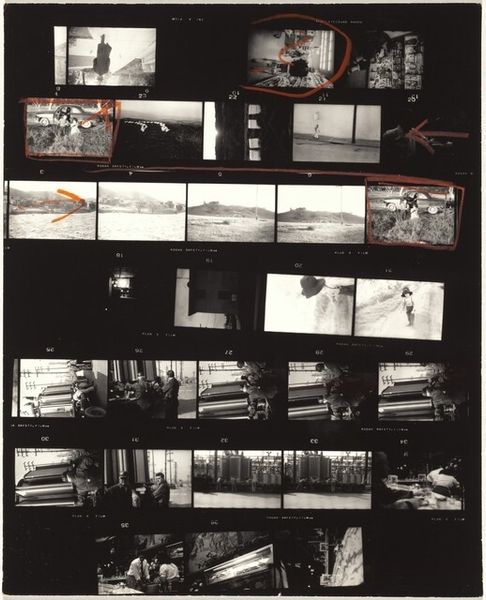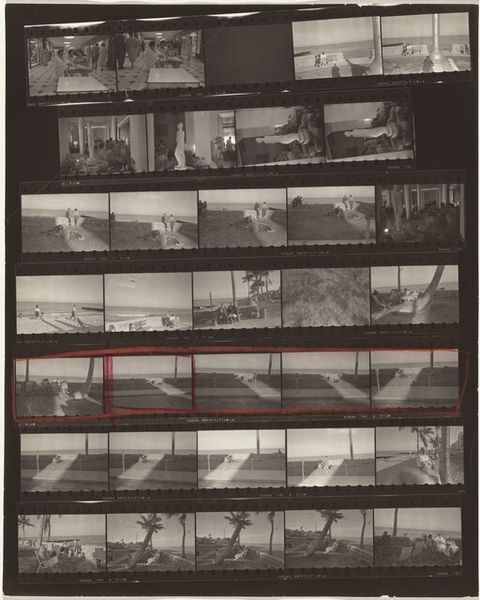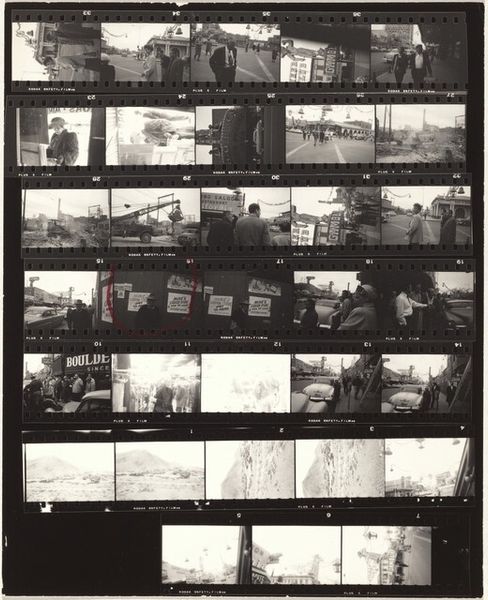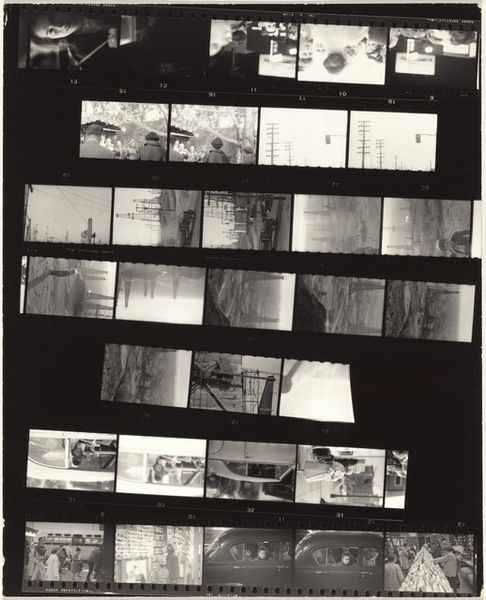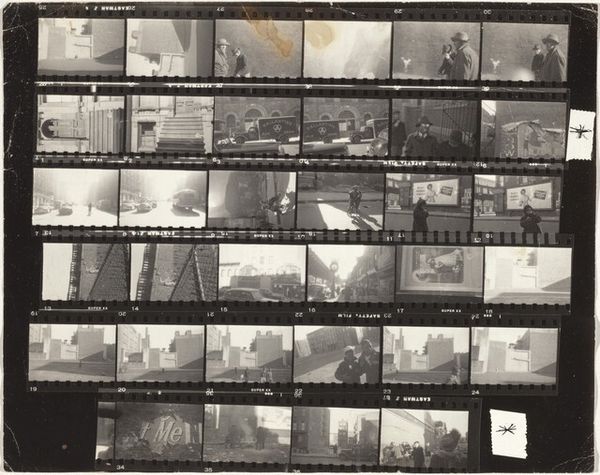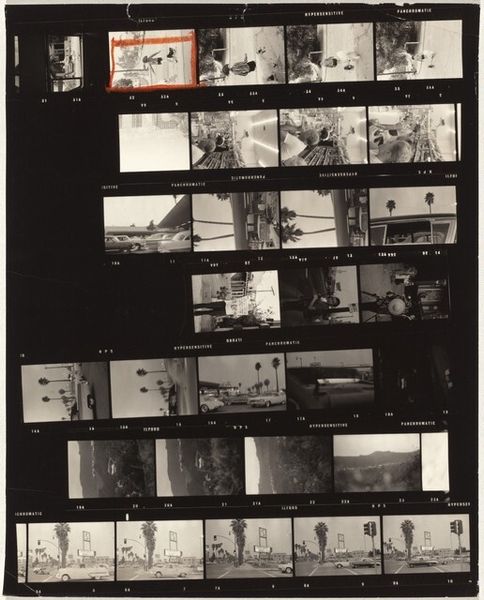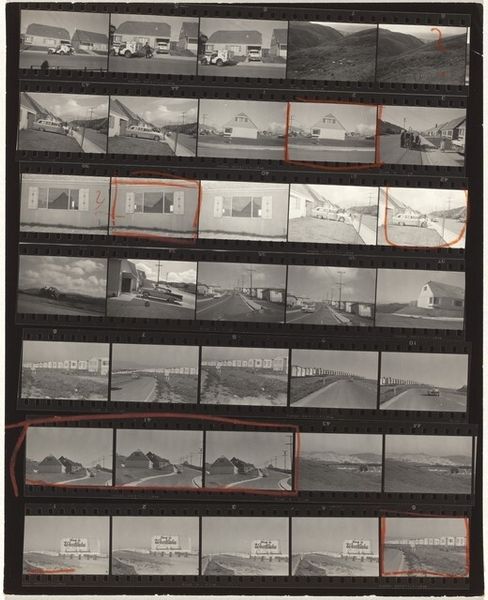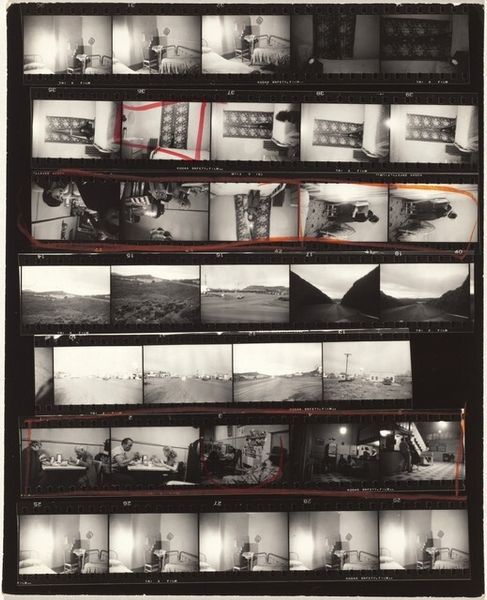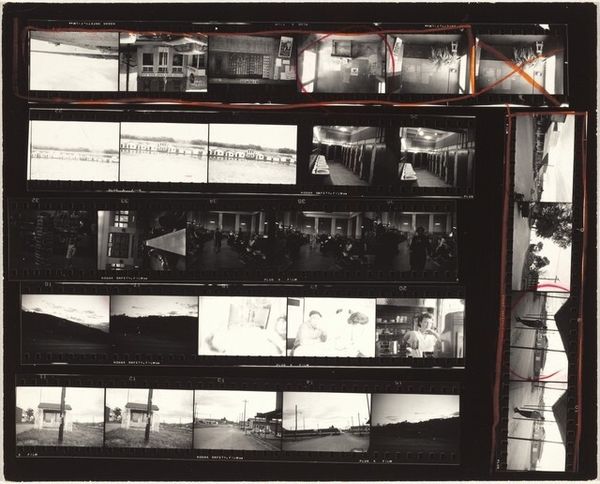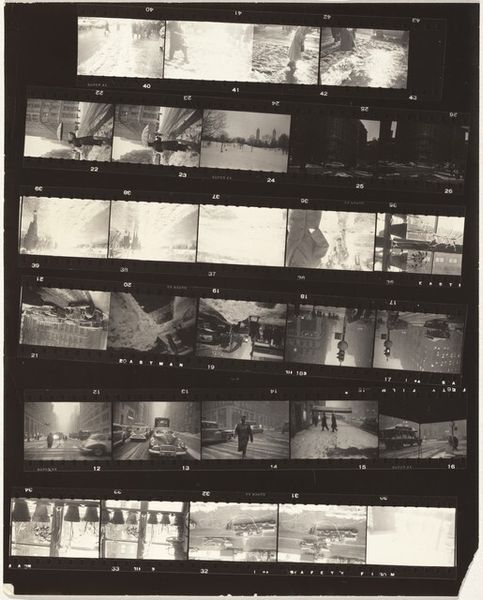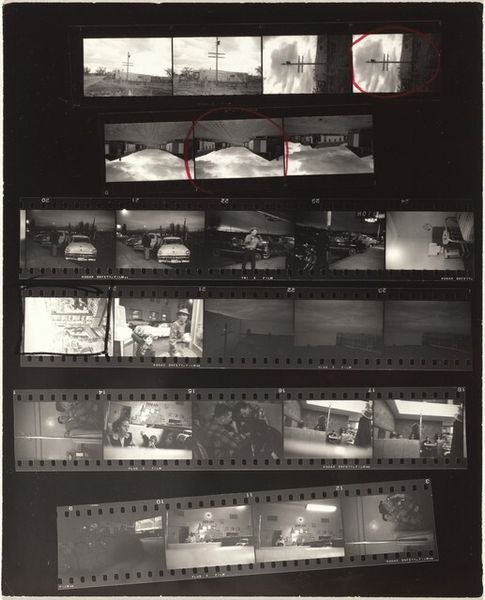
Dimensions: overall: 25.3 x 20.5 cm (9 15/16 x 8 1/16 in.)
Copyright: National Gallery of Art: CC0 1.0
Editor: Here we have Robert Frank’s "Guggenheim 394—to Las Vegas, Nevada," a gelatin silver print from 1955. Seeing all the images together like this—a contact sheet, almost—gives it a documentary feel. It's stark, almost melancholic. What stands out to you when you look at this piece? Curator: Well, immediately, the grittiness and rawness strike me. This wasn't about picturesque landscapes; Frank's lens offers a counter-narrative to the idealized American dream. He was interested in showing what was really going on: alienation, inequality, and the subtle fractures beneath the surface of 1950s prosperity. Editor: I see what you mean. There’s that row of nearly identical buildings... They look so empty and isolating. Curator: Exactly. The repetition highlights a certain kind of cultural conformity. Think about the socio-political context. It was the Cold War era. What role do you think photography like this played in questioning dominant ideologies? Editor: I guess it’s offering an alternative point of view... showing the underbelly, so to speak. It makes me wonder about the people who lived in those places, and what their lives were really like. Not just the surface image everyone was selling. Curator: Precisely. And by showing this 'underbelly,' Frank provides a visual critique of the myth of American exceptionalism, revealing the complexities and contradictions within the culture. This work pushes us to consider whose stories are being told, and whose are being erased. Editor: This has totally changed how I see this piece. It's not just a photo, it's a commentary. Curator: Absolutely. Art, at its most powerful, ignites dialogue, and forces us to confront uncomfortable truths.
Comments
No comments
Be the first to comment and join the conversation on the ultimate creative platform.
